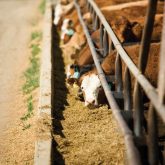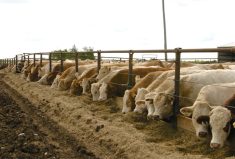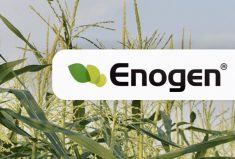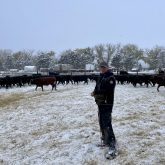A shortage of feed has prompted many producers to bale pea straw.
“In travelling around Alberta, it seems that a lot of field pea straw has been baled,” said Mark Olson, unit head of pulse crops with Alberta Agriculture and Forestry in Stony Plain.
“However, many producers selling or purchasing field pea straw for feed don’t know what the fertilizer equivalent or feed value of the straw is.”
That presents two challenges — knowing what to pay for pea straw and how to use it to formulate a satisfactory ration.
Read Also

Horns aren’t unlocking anytime soon on livestock transport standards
Standards good enough meet the definition of “humane” animal transportation still vary widely between what what industry wants, what animal rights advocates want and, between the two, what federal regulators decide is good enough.
Step one is testing it, said Olson.
“Western Canadian research into the nutritive attributes of field pea straw is limited,” he said. “Results from a three-year study on over 450 field pea straw samples collected from behind the combine from various locations in south-central Alberta showed a large variability in nutritive value between years and locations. There was average of 7.5 per cent crude protein, 0.087 per cent, phosphorus, 1.38 per cent potassium, 0.133 per cent sulphur, 1.68 per cent calcium, 50 per cent acid detergent fibre (ADF) and 63 per cent neutral detergent fibre (NDF).”
Using 2015 fertilizer prices and the average nutrient values from that study, field pea straw was calculated to have an approximate fertilizer equivalent value of $30 per tonne, not counting baling and hauling, said Olson.
“The cost of baling and hauling varies greatly among producers and locations in the province,” he added.
A 2014 Alberta Agriculture survey found the custom rate for baling ranged from $9 to $15 per large round bale, with hauling adding another $8 to $10 (dependent on mileage) per bale.
“If one were to assume 1,000 pounds per large round bale, the value of that straw could easily range anywhere from $32 to $40 per bale delivered in the yard — but, of course, this is dependent on demand,” said Olson.
In terms of feeding, field pea straw quality appears to be better than cereal straw.
“It can be significantly higher in protein, but high fibre levels limit digestibility and expected feed intake. Field pea straw is primarily useful for beef cow rations where high-quality roughage is not as important as other classes of cattle. Field pea straw, when fed with higher-quality roughage, grain or a combination of both, can produce a very cost-effective ration. Generally, higher protein levels make pea straw a better match with grain than with cereal straw.”
Palatability studies with field pea straw have not been conducted.
“Anecdotal evidence provided by beef producers suggests a large range in field pea straw palatability, from cattle devouring the field pea straw to complete rejection. Mould, caused by baling straw that wasn’t dry, may be one reason animals may not consume it wholeheartedly. Additionally, some livestock producers have indicated that field pea straw sprayed with pre-harvest treatment may have lower palatability. To date there is no scientific evidence to support or refute this observation.”
Processing the straw — such as grinding or chopping it with machines like mix mills or hay busters — and mixing it with other feeds may help with palatability, he added.















